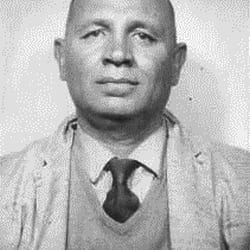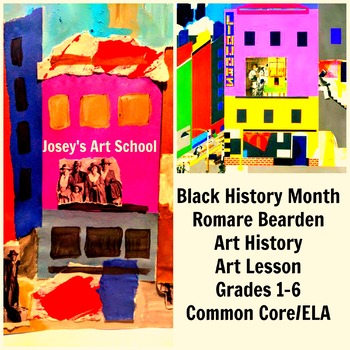/beardenwithartwork-5895c28a3df78caebcac0892.jpg)
Romare Bearden was born on September 9, 1912 in Charlotte, N.C.
At an early age, Bearden’s family moved to Harlem. His mother, Bessye Bearden was the New York editor for the Chicago Defender. Her work as a social activist allowed Bearden to be exposed to artists of the Harlem Renaissance at an early age.
Bearden studied art at New York University and as a student, he drew cartoons for the humor magazine, Medley. During this time, Bearden also freelanced with newspapers such as Baltimore Afro-American, Collier’s, and the Saturday Evening Post, publishing political cartoons and drawings. Bearden graduated from New York University in 1935.
Life as an Artist
Throuhgout Bearden’s career as an artist, he was heavily influenced by African-American life and culture as well as jazz music.
Following his graduation from New York University, Bearden was attending the Art Students League and working with expressionist George Grosz. It was during this time that Bearden became an abstract collage artist and painter.
Bearden’s early paintings often depicted African-American life in the South. His artistic style was influenced heavily by muralists such as Diego Rivera and Jose Clemente Orozco.
By the 1960s, Bearden was innovative art works that incorporated acrylics, oils, tiles, and photographs. Bearden was heavily influenced by 20th century artistic movements such as cubism, social realism and abstraction.
By the 1970s, Bearden continued to depict African-American life through the use of ceramic tilings, paintings and collage. For instance, in 1988, Bearden’s collage “Family,” inspired a larger artwork that was installed at the Joseph P. Addabbo Federal Building in New York City.
Bearden was also heavily influenced by the Caribbean in his work. The lithograph “Pepper Jelly Lady,” portrays a woman selling pepper jelly in front of a wealthy estate.

Documenting African-American Artistry
In addition to his work as an artist, Bearden wrote several books on African-American visual artists. In 1972, Bearden coauthored “Six Black Masters of American Art” and “A History of African-American Artists: From 1792 to Present” with Harry Henderson. In 1981, he wrote “The Painter’s Mind” with Carl Holty.

SOURCE: CLICK HERE

CLICK HERE FOR RESOURCES THAT HELP YOU TEACH ABOUT BLACK ARTISTS
